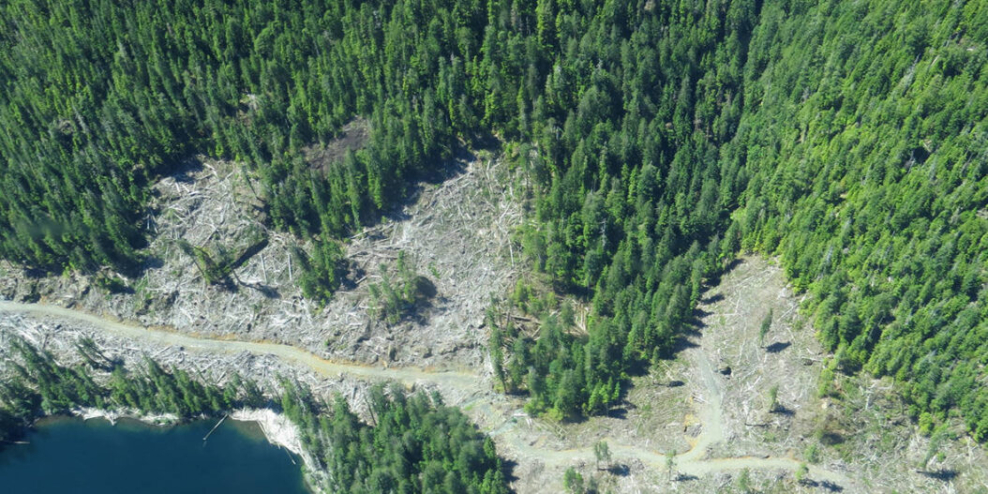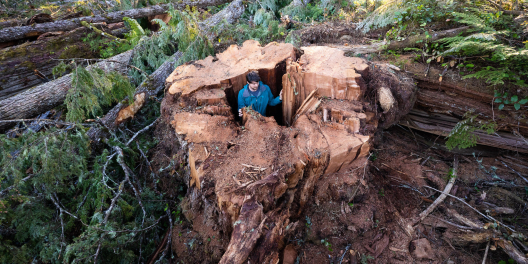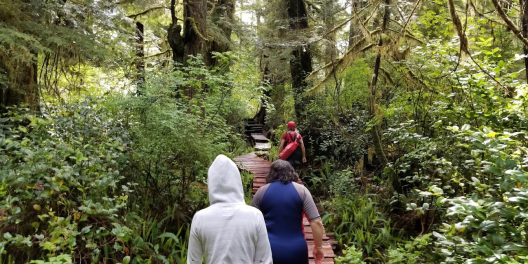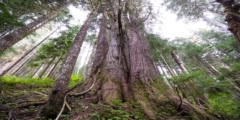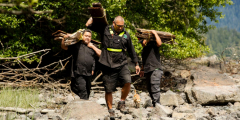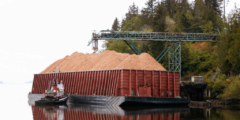In 2018, a complaint was filed to the B.C. Forest Practices Board (FPB) about logging in the Nahmint Valley. Some of the biggest trees in the Valley had been cut down, and something about it didn’t seem right. Three years later the FPB found, it turns out those trees never should have been cut down in the first place, and the province is to blame.
The Nahmint Valley is in Nuu-chah-nulth territory. There aren’t many old-growth forests like it left on Vancouver Island, and on the southern part of the island they are especially rare. It has some of the biggest Western red cedar and Douglas fir trees in British Columbia.
The province has it listed as a Special Management Zone, which means it’s supposed to have really high standards for conservation even though it isn’t technically a protected area. The conservation standards are there to protect the rivers and animals that live in the Valley.
The blocks where the old-growth trees were cut were on public land owned by all British Columbians and managed by the Crown corporation called B.C. Timber Sales. As a Crown corporation, BC Timber Sales (BCTS) is a part of the B.C. government that gets to operate on its own without much oversight.
BCTS cutblocks are a good deal for logging companies: The main logging roads are built at taxpayers’ expense and are supposed to align with government policies and regulations. The Crown Corporation is also supposed to lay out a conservation plan for the companies to tell them which trees they can cut down and how they can protect the rivers and animals that live in the area.
But it turns out B.C. Timber Sales isn’t always so good at protecting the rivers and animals. BCTS makes mistakes and sometimes approves cut blocks that they shouldn’t. Or they give the companies a bad plan that doesn’t line up with conservation standards.
BCTS also doesn’t go out and check to make sure the logging companies are actually following the plans. That’s part of the problem. The only way BCTS finds out if a company is cutting trees they shouldn’t is if a concerned citizen or whistleblower complains.
Even when someone complains it can be hard to track down who did the logging. Major companies who buy the right to log BCTS cutblocks can contract the logging out to smaller companies. Then sometimes those smaller companies hire a different group to do the work. So when the old trees get cut down, it’s hard to figure out who did it.
In the case of the Nahmint, the old-growth trees were cut down because BCTS came up with a bad plan, and the government approved it even though the plan didn’t line up with its own standards for protecting rivers and animals. People are now asking if the same kinds of mistakes are being made in other parts of BC.
In an email to Ha-Shilth-Sa News, the Ministry of Forests says that logging is still happening in the Nahmint.
To date, the BC government has not amended the law to close the loopholes that allowed BCTC to ignore the rules.
